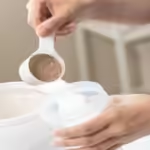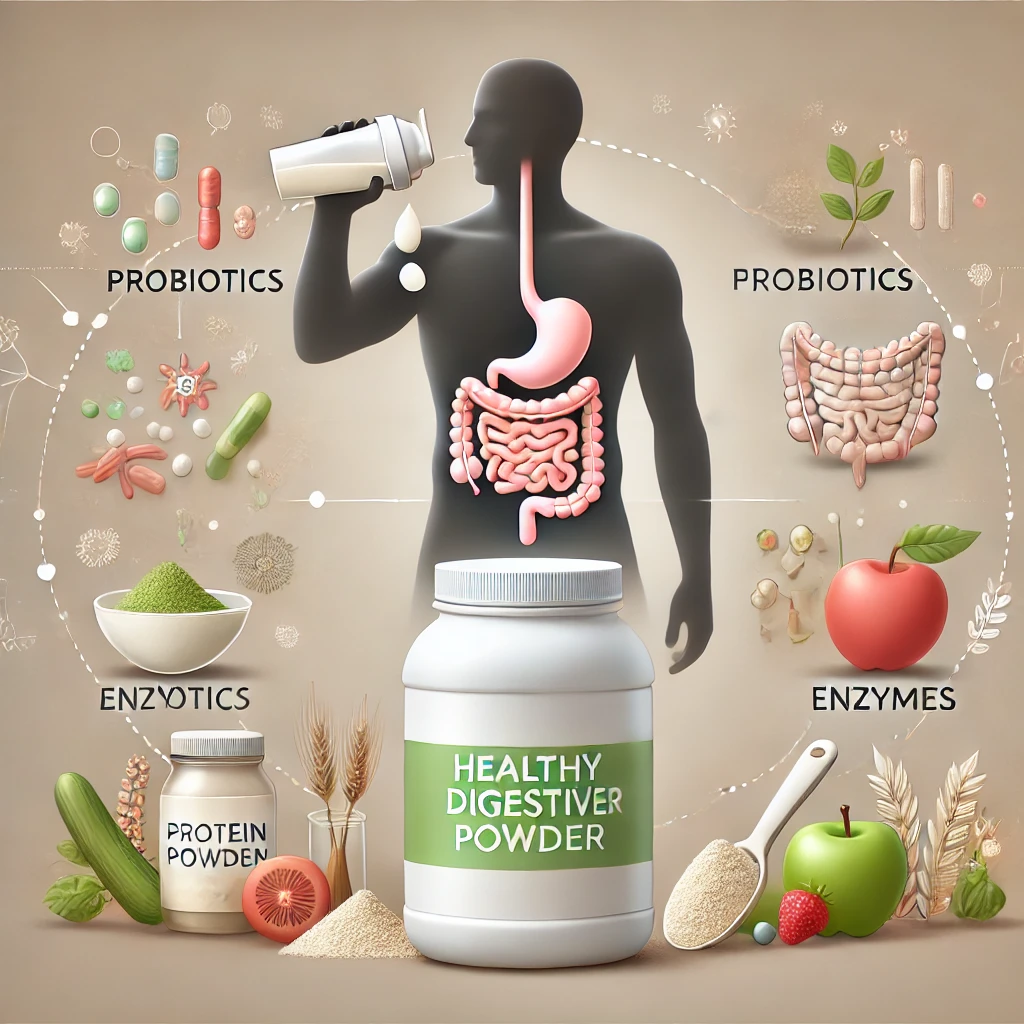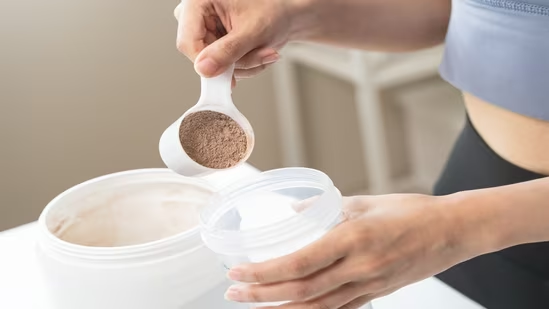Introduction to Baking with Protein Powders
Baking with protein powders can be a game-changer for those wanting to add extra nutrients to their sweet treats. Whether you’re a fitness enthusiast looking for more protein or just someone curious about adding a healthy twist to classic desserts, protein powder is a versatile ingredient that can give your baked goods a nutritional boost.
Table of Contents
Why Add Protein to Your Baking?
Adding protein powder to your baking isn’t just a trend; it’s a simple way to add a muscle-repairing, hunger-fighting nutrient to your diet without compromising taste. It’s perfect for those post-workout snacks or as a healthy addition to your favorite comfort foods.
Types of Protein Powders to Consider
There are a variety of protein powders available, each bringing its own characteristics to baking. Whey protein, casein, soy, and pea protein powders are all common choices. The type you choose will influence both the texture and flavor of your baked goods.
Benefits of Adding Protein Powders to Baked Goods

Boosting Nutritional Value
Adding protein powders to baked goods helps boost their nutritional content significantly. A cookie or muffin with added protein is not just a treat but also a way to contribute to your daily protein needs, especially if you’re active or on a diet requiring higher protein intake.
Enhancing Satiety and Muscle Repair
Protein-rich snacks are more satisfying and help reduce cravings, making them a great option for maintaining a balanced diet. Protein is also vital for muscle repair, so incorporating it into baked goods can be a convenient way to promote recovery after exercise.
Choosing the Right Protein Powders for Baking
Whey Protein vs. Plant-Based Proteins
Whey protein is often the go-to choice for baking because of its versatility and mild flavor. However, if you’re vegan or lactose intolerant, plant-based proteins like pea or soy work well too. Keep in mind that whey protein tends to produce a lighter texture, whereas plant-based proteins might make baked goods a bit denser.
Understanding Protein Powder Texture and Flavor
Different protein powders vary in texture and flavor. Whey protein, for instance, blends easily, but pea protein has a grainier consistency. Additionally, flavored protein powders, like chocolate or vanilla, can add a different dimension to your recipes, but you may need to adjust the sweetness.
Tips for Successfully Adding Protein Powder to Recipes

Adjusting Liquid Ratios
One key tip is adjusting the liquid content. Protein powders absorb a lot of moisture, so you often need to add extra liquid (milk, water, or oil) to maintain the correct consistency. Without this, your baked goods may turn out too dry.
Finding the Right Balance of Protein Powder and Flour
When baking, don’t replace all the flour with protein powders. A good rule of thumb is to substitute about 1/4 to 1/3 of the flour with protein powders. This balance helps keep the texture similar to traditional baked goods while still providing a protein boost.
Understanding the Impact on Baking Time and Temperature
Protein powder can alter the baking time and temperature of your recipes. Protein-enriched batters often bake faster, so keep an eye on your oven to avoid overcooking. Lowering the temperature slightly can help ensure a soft and moist final product.
Creative Ways to Use Protein Powder in Baked Goods
Protein Cookies and Brownies
Cookies and brownies are excellent choices for incorporating protein powder. You can mix in some chocolate-flavored protein powder with your traditional cookie ingredients, making treats that taste indulgent but have an extra health kick.
Protein-Packed Muffins
Muffins are another versatile option for adding protein. Banana or blueberry muffins blend well with vanilla protein powder, resulting in a delicious, healthy snack that’s great for breakfast or a midday bite.
High-Protein Pancakes and Waffles
If you love pancakes or waffles, try adding protein powders to the batter. This creates a breakfast option that’s not only tasty but also more filling, giving you energy for the day ahead.
The Role of Sweeteners and Flavorings in Protein Baking

Balancing Sweetness with Protein Powder
Adding protein powders to your baked goods may slightly affect the taste, sometimes making them less sweet. Consider adding natural sweeteners like honey, maple syrup, or stevia to balance the flavors without adding refined sugar.
Flavor Pairing Ideas
Pairing flavors correctly is key to tasty protein baked goods. For example, chocolate protein powder works well with almond or peanut butter, while vanilla pairs nicely with citrus zest or berries. Playing with these combinations can make your baked goods stand out.
Common Mistakes to Avoid When Baking with Protein Powder
Overusing Protein Powder
Using too much protein powder can lead to dense and rubbery baked goods. It’s important to start small and slowly find the right amount for your recipes, ensuring that they still taste good and have the right texture.
Avoiding Dry and Dense Textures
The most common mistake is not balancing moisture correctly. Always be aware that protein powder will make the batter drier, so extra fat (like oil or butter) and liquid will help keep your baked goods soft and moist.
How to Substitute Protein Powder in Traditional Recipes
Replacing Flour with Protein Powder
When substituting flour, remember that protein powder behaves differently. Start by replacing only a small portion of the flour, around 1/4 of the total, to maintain a similar texture while still adding protein.
Maintaining Texture and Consistency
The texture is key. To maintain it, use ingredients like Greek yogurt, mashed bananas, or applesauce. These additions can help add back moisture lost by using protein powder, keeping the consistency closer to the original recipe.
Sample Protein-Packed Baking Recipes
Protein Banana Bread Recipe
A simple way to start is with protein banana bread. Substitute 1/3 of the flour with vanilla protein powder, and use overripe bananas for sweetness. It’s a fantastic way to enjoy a protein-rich snack that’s still naturally sweet and moist.
Easy Protein Chocolate Chip Cookies
For cookies, add chocolate protein powder and adjust the flour content accordingly. You might also add a little extra butter or a few drops of milk to maintain that perfect cookie consistency.
Practical Tips for Beginners
Start with Simple Recipes
If you’re new to baking with protein powder, start simple. Recipes like muffins, pancakes, or banana bread are easier to adapt than complex pastries or cakes, giving you a feel for how protein powder affects your baking.
Experimenting with Small Batches
Experiment with small batches until you find what works best. It’s better to test with a smaller quantity, so you can make adjustments without wasting too many ingredients if it doesn’t turn out perfectly the first time.
Storage Tips for Protein-Enhanced Baked Goods
Keeping Your Treats Fresh
Protein-enriched baked goods tend to dry out quicker, so store them in airtight containers. Adding a slice of bread to the container can help keep them moist longer.
Freezing and Reheating Protein Baked Goods
Most protein-based baked goods freeze well. Freeze them individually and reheat in the microwave for a quick, protein-packed treat whenever you need it.
Conclusion
Incorporating protein powder into your baking is an easy and creative way to boost the nutritional value of your favorite treats. From enhancing satiety to adding a muscle-repairing punch to muffins and cookies, the possibilities are endless. With a few tweaks and experiments, you can master the art of protein baking, creating delicious, healthier versions of your favorite baked goods.
FAQs
Can I Use Any Protein Powder for Baking?
Yes, but the type of protein powder you use will affect the texture and taste of the final product. Whey and plant-based proteins each have their own characteristics.
How Much Protein Powder Should I Use in a Recipe?
A general rule is to substitute 1/4 to 1/3 of the flour with protein powder. Too much can lead to a dense texture.
Do Protein Baked Goods Taste Different?
They can, depending on the type and flavor of the protein powder used. Adjust sweeteners and flavorings to maintain a tasty result.
Can Protein Powder Replace All the Flour in a Recipe?
No, it’s best to replace only part of the flour. Using only protein powder will make the baked goods dense and unappetizing.
What Are the Best Recipes for Beginners to Try?
Begin with simple recipes like protein pancakes, muffins, or banana bread. These are easier to adapt and forgiving if the balance isn’t perfect initially.








